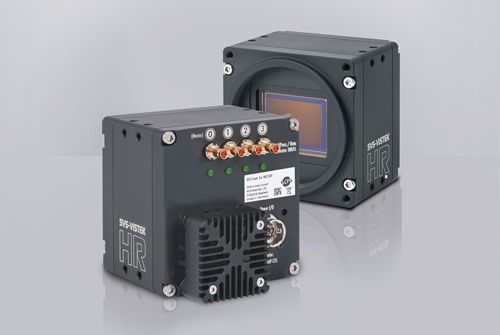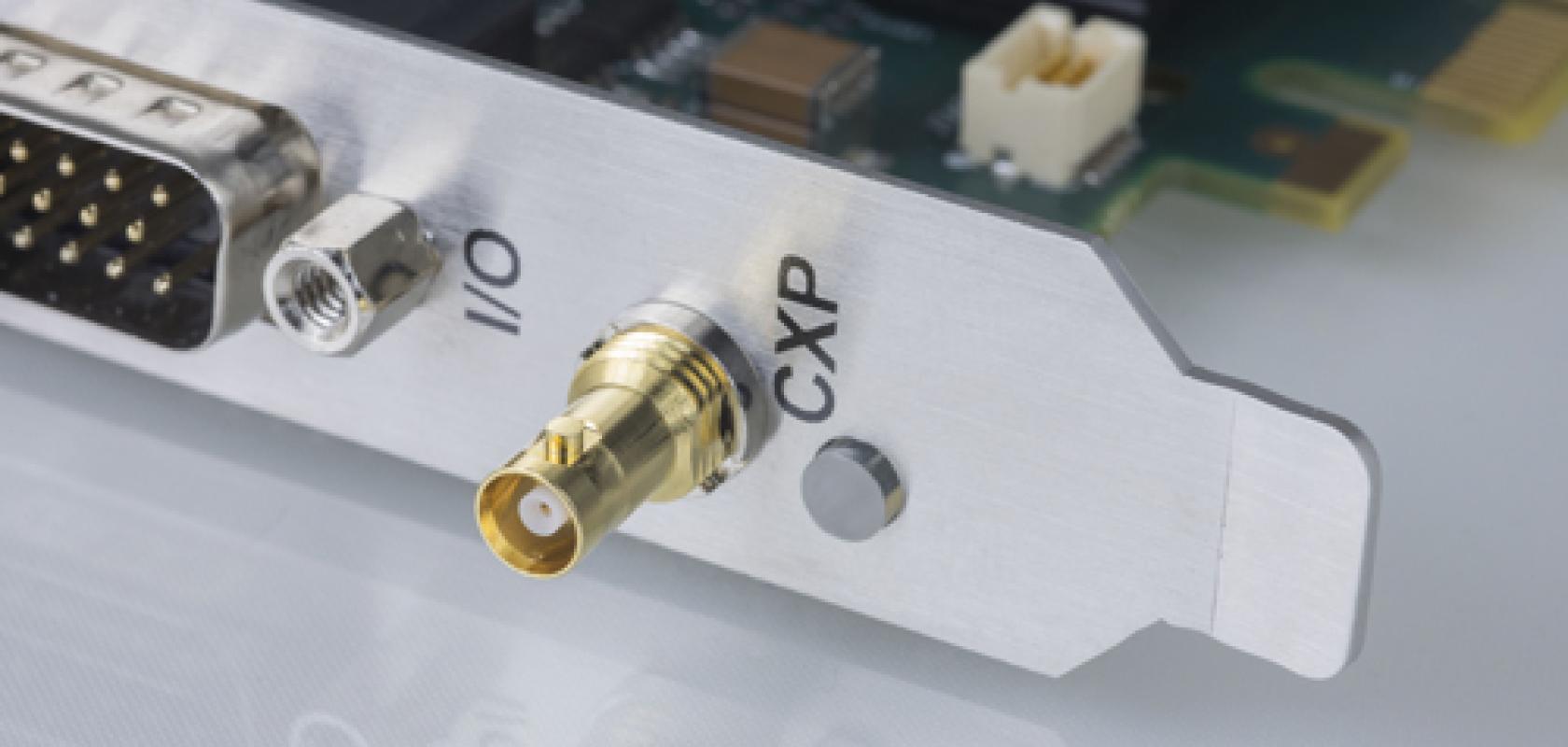In June the Japan Industrial Imaging Association released CoaXPress v2.0 and components supporting it are now coming to market. Adopted as an official JIIA standard in 2010, CoaXPress remains the best option for applications requiring data rates over 5Gb/s or demanding complex triggering. The latest specification brings several advantages to machine vision systems.
The first is speed. In order to support the fastest cameras on the market, CoaXPress 2.0 increases the existing speed of 6.25Gb/s per link to 10Gb/s (CXP-10) or 12.5Gb/s (CXP-12). Links can be concatenated, so a four-link frame grabber can now transfer data at 50Gb/s, much faster than the 5Gb/s of USB3 Vision or 10Gb/s of 10 GigE Vision. Additionally, CoaXPress is a technology designed specifically for machine vision and is therefore more reliable than USB3 Vision or 10 GigE Vision, providing continuous and sustained data rates.
The uplink speed has also been doubled for version 2.0 to 42Mb/s, enabling trigger rates over 500kHz without the additional cost of a dedicated high-speed uplink. The precise, real-time triggering capability of CoaXPress, with camera control and digital video options all over one cable, make the standard ideal for high-speed line scan and area scan applications, such as flat panel and PCB inspection.
Version 2.0 also enables a single camera to send data to more than one frame grabber, even supporting boards in different PCs. An enormous benefit of CoaXPress is the extended cable lengths that are possible – high-quality data transmission is proven at 40m for CXP-12, compared to around 10m for Camera Link and 16m for USB3. With the facilitation of multiple destinations, how data is moved around a vision system is now even more flexible.
GenICam-compliant event packets have been added to v2.0, to allow the camera to send status information to the frame grabber, for example, start of exposure. It still includes GenTL for a plug-and-play experience and will soon add the GenDC standard for streaming complex data types.
The preferred connector for version 2.0 is the micro-BNC, also known as HD-BNC. The transceiver chipset used in CoaXPress frame grabbers uses a cable driver at the camera and an equaliser chip at the frame grabber, connecting directly to a serialiser or deserialiser (SERDES), which are built into most FPGAs. Together, these parts are extremely compact and offer a low-power solution. Power-over-CoaXPress remains at 13W per cable.
News from IVSM
Technical committees came together in Stresa, Italy for the International Vision Standards Meeting (IVSM) in early October. This is the biannual forum to evaluate all the standards and plan for the future. The meeting included the first CoaXPress plug-fest following the release of CoaXPress v2.0, and a very pleasing 24 combinations of camera and frame grabber products passed interoperability tests at CXP-12. Frederik Voncken, of Adimec, was appointed technical vice-chair of CoaXPress. Macom and Microchip, the two physical layer suppliers, added their input to conclude the meeting.
The roadmap for CoaXPress was also discussed at the meeting and a draft text for the next release, 2.1, was reviewed. The main change was the addition of support for GenDC, which will allow CoaXPress to send more complex image formats such as 3D. Version 2.1 is planned to be released in Q1 2020. Looking further ahead, faster speeds will be demanded by the industry and, at speeds above 20Mb/s, optical is the way forward. Therefore, an elegant proposal was presented to the committee to map existing well-proven CoaXPress protocol to XGMII, to allow use of existing – and future – Ethernet physical layer components.
Vision-assisted surgery
As a dedicated machine vision standard, CoaXPress has been widely adopted into applications including industrial inspection, life science, surveillance, aerospace and medical imaging. It is proven to be more robust and reliable than USB3 or GigE, and offers far higher speeds and much longer cable lengths than Camera Link. The appeal of a single, flexible and cost-effective cable to transfer all data and power is a definite advantage for integration into existing systems.
One of Active Silicon’s customers in vision-assisted surgery has summed up its appeal: ‘The specific benefit for us with CoaXPress is the ability to run long cables outside the treatment environment, as we have seen PC failures in such a harsh environment. Our latest specification camera can only operate at three metres over Camera Link, but we have had no problem at 45 metres with CoaXPress.’
Furthermore, as the components become smaller and speeds increase, the appeal of CoaXPress is growing outside traditional sectors. Robotics, automotive and aerospace applications are now enjoying the benefits of faster, more adaptable and more reliable image acquisition. The use of a frame grabber maximises CPU capacity for other processing tasks – a must for the world of Industry 4.0.
Several manufacturers are now introducing CXP-12 products to the market. Active Silicon’s FireBird frame grabbers support the fast vision systems, using DMA Engine technology, ActiveDMA. This technical innovation applies Risc-based processor techniques and guarantees high speed, low-latency image data transfers and zero CPU intervention. With hardware like this, vision systems can be introduced or upgraded at low cost, adding enhanced imaging capability across a wide range of sectors.

Chris Beynon, CTO of Active Silicon and technical chair for CoaXPress
Commercial products
Matrox Imaging has introduced one- and two-connection versions of its Rapixo CXP series of frame grabbers, to complement the original version with four connections. Each of these frame grabbers supports the highest speeds in CoaXPress 2.0 – namely the CXP-12 mode – for high-end machine vision applications.
The major feature of the CXP 2.0 standard is the increased data rate – now up to 12.5Gb/s. The doubled bandwidth per connection is ready for the new generation of high-resolution, high-rate image sensors.
Matrox Rapixo CXP single and dual boards can interface with either one or two CXP 2.0-compliant cameras; the dual board can accommodate higher data rates through connection aggregation. The boards support power-over-CoaXPress, simplifying system setup by having power delivered over one of the coaxial cables.
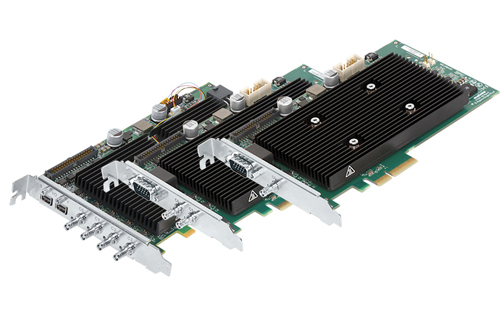
Other new CXP-12 frame grabbers are the Coaxlink Mono CXP-12 and Duo CXP-12 from Euresys. These are one- and two-connection CoaXPress 2.0 frame grabbers, complementing the four-connection Coaxlink Quad CXP-12 already available.
The compact, fanless frame grabbers have a PCIe card design. In addition, the Coaxlink CXP-12 range supports 40-metre coaxial cables.
Meanwhile, BitFlow has built a high-speed CoaXPress-Nvidia embedded imaging system. This small form factor solution was engineered with lower hardware requirements to fit in compact devices or be integrated directly into a larger mechanical or electrical system.
Donal Waide, director of sales for BitFlow, commented: ‘Through our Innovation Labs division, BitFlow is leveraging the CoaXPress 2.0 interface to develop embedded systems that are faster, more intuitive, and easier to integrate throughout the factory, which is critical to success in the IIoT era.’
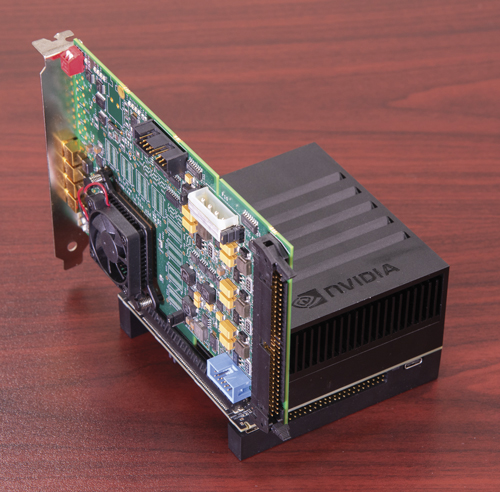
The CoaXPress-Nvidia solution combines the BitFlow Claxon-CXP4 Quad CXP-12 frame grabber with an Nvidia Jetson TX2 high-density AI computing platform. It was demonstrated at Laser World of Photonics in Munich in the summer with a JAI SP-12000C-CXP4 camera for image acquisition. HDMI, DisplayPort, DSI and eDP video ports provide flexibility in display choices. The images are relayed from the Claxon frame grabber and processed on the Nvidia GPU. At Laser World of Photonics, BitFlow demonstrated how its Claxon frame grabber provided direct memory access for 12 megapixel images transferred into GPU memory, where the Nvidia processor performed 2D to 3D transformations in real time.
BitFlow Innovation Labs was founded to accelerate the adoption of embedded vision and CoaXPress 2.0.
In terms of cameras, Basler has released an evaluation kit for testing its Boost camera with a CXP-12 interface. The kit consists of a Basler Boost camera, the CXP-12 interface card specifically designed for it, and the CXP-12 starter kit to connect the camera.
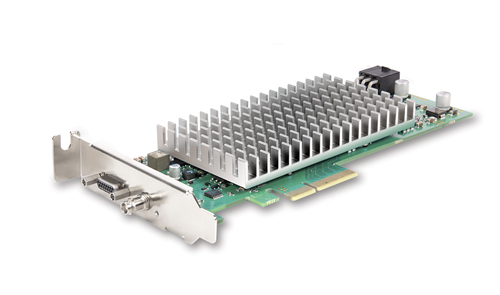
The Boost series is based on either the Sony IMX253 sensor with a 12 megapixel resolution and 68fps maximum frame rate, or the IMX255 sensor with 9 megapixels and 93fps. The camera measures 80 x 80 x 45mm, and includes a digital input and two GPIO ports, with a maximum cable length of 40 metres.
The Boost cameras achieve a bandwidth of up to 12.5Gb/s with a single CXP-12 cable. Precise triggering using the CXP cable eliminates the need for a separate I/O cable, making a single-cable solution possible in combination with power-over-CXP. This significantly lowers system costs.
The CXP-12 interface card connects the camera via one CXP-12 channel. Both components can be controlled with the Pylon camera software suite.
The evaluation kit also includes the CXP-12 starter kit. This contains a CXP data cable, two heat sinks for heat management, a C-mount lens adapter, and an I/O cable to trigger the camera externally.
In addition, SVS-Vistek has launched its Hr342 CoaXPress camera, based on Sony’s IMX342 sensor with 31-megapixel resolution. The camera has a dynamic range of 70dB and a frame rate of 35.4fps. A clever implementation of the CoaXPress interface and a housing design with outstanding heat dissipation ensures a low operating temperature, which in turn enables low image noise. A version with a 10 GigE interface is also planned.
